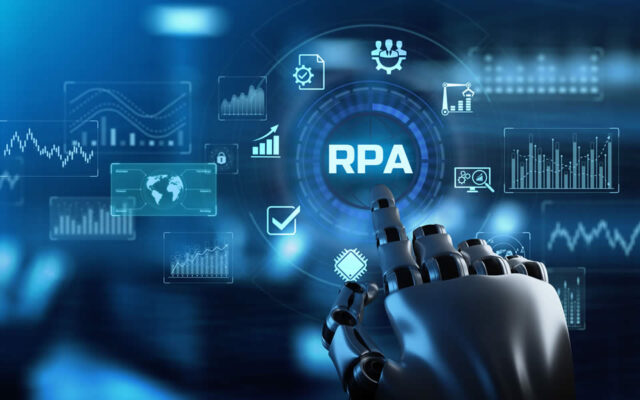
In today’s rapidly advancing technological landscape, the integration of Robotic Process Automation (RPA) and Large Language Models (LLMs) with legacy systems represents a significant opportunity for organizations to enhance operational efficiency, improve decision-making capabilities, and leverage cutting-edge automation technologies. This blog explores the best practices and considerations for seamlessly integrating RPA and LLMs with legacy systems, paving the way for transformative outcomes.
Understanding RPA and LLMs
Robotic Process Automation (RPA) involves the use of software robots or bots to automate repetitive, rule-based tasks traditionally performed by humans. RPA systems are adept at handling structured data and executing tasks with high accuracy and speed, making them invaluable in streamlining business processes across various industries.
On the other hand, Large Language Models (LLMs) represent a breakthrough in artificial intelligence (AI) technology, specifically designed to understand and generate human language. LLMs like GPT-3 and others have demonstrated remarkable capabilities in natural language processing tasks such as text generation, language translation, sentiment analysis, and more.
Challenges of Integrating with Legacy Systems
Legacy systems, while robust and entrenched in many organizations, often present challenges when integrating with modern automation technologies like RPA and LLMs:
- Compatibility Issues: Legacy systems may use outdated technology stacks or lack APIs (Application Programming Interfaces) required for seamless integration with RPA and LLM platforms.
- Data Accessibility: Accessing data stored in legacy systems, which may be in non-standard formats or databases, can pose data extraction challenges for RPA bots and LLMs.
- Security Concerns: Integrating with legacy systems requires stringent security measures to protect sensitive data and ensure compliance with regulations such as GDPR or HIPAA.
Best Practices for Integration
To overcome these challenges and achieve successful integration of RPA and LLMs with legacy systems, organizations can follow these best practices:
1. Comprehensive System Assessment
Begin by conducting a thorough assessment of your legacy systems, identifying their architecture, data formats, APIs, and potential integration points. This assessment helps in understanding compatibility issues and planning appropriate integration strategies.
2. API-First Approach
If your legacy systems lack robust APIs, consider implementing an API layer or middleware that acts as a bridge between the legacy system and modern RPA and LLM platforms. This API-first approach facilitates seamless data exchange and interaction between systems.
3. Data Standardization and Cleansing
Legacy systems often store data in diverse formats or with inconsistencies. Standardize and cleanse data before integrating with RPA and LLMs to ensure accuracy and reliability in automated processes. Data preprocessing steps can include normalization, deduplication, and validation.
4. Modular Integration
Adopt a modular integration strategy where RPA bots and LLMs are integrated with legacy systems in phases or modules. Start with low-risk processes or departments before scaling to critical operations. This approach minimizes disruption and allows for iterative improvements based on feedback and performance metrics.
5. Scalability and Flexibility
Design integration frameworks that are scalable and flexible to accommodate future updates or changes in legacy systems and business requirements. Use cloud-based solutions for RPA and LLMs to leverage scalability and reduce infrastructure dependencies.
6. Security and Compliance
Prioritize security measures such as data encryption, access controls, and audit trails when integrating RPA and LLMs with legacy systems. Ensure compliance with industry regulations and internal policies to safeguard sensitive information and maintain data integrity.
7. Performance Monitoring and Optimization
Implement robust monitoring mechanisms to track the performance of integrated systems, including RPA bots and LLMs interacting with legacy systems. Analyze metrics such as response times, error rates, and throughput to identify bottlenecks and optimize workflows continuously.
Case Study: Integrating RPA and LLMs with Legacy ERP
Consider a scenario where a manufacturing company aims to automate inventory management using RPA and enhance procurement decisions with LLM-driven predictive analytics. By integrating RPA bots with the legacy ERP system through custom APIs, the company automates inventory updates, order processing, and supplier communications.
Simultaneously, LLMs analyze historical procurement data from the ERP system to generate forecasts, recommend optimal inventory levels, and identify cost-saving opportunities. This integrated approach improves operational efficiency, reduces procurement cycle times, and enhances decision-making accuracy.
Conclusion
Integrating Robotic Process Automation (RPA) and Large Language Models (LLMs) with legacy systems presents a transformative opportunity for organizations to streamline operations, enhance data-driven decision-making, and achieve competitive advantages in their respective industries. By following best practices such as comprehensive system assessment, API-first approach, and robust security measures, businesses can successfully navigate integration challenges and harness the full potential of automation technologies.
As organizations continue to evolve in the digital age, the synergy between RPA, LLMs, and legacy systems will play a pivotal role in shaping future business landscapes, driving innovation, and delivering unparalleled efficiency gains. Embrace the power of integration today to unlock new possibilities and propel your organization towards sustained success.